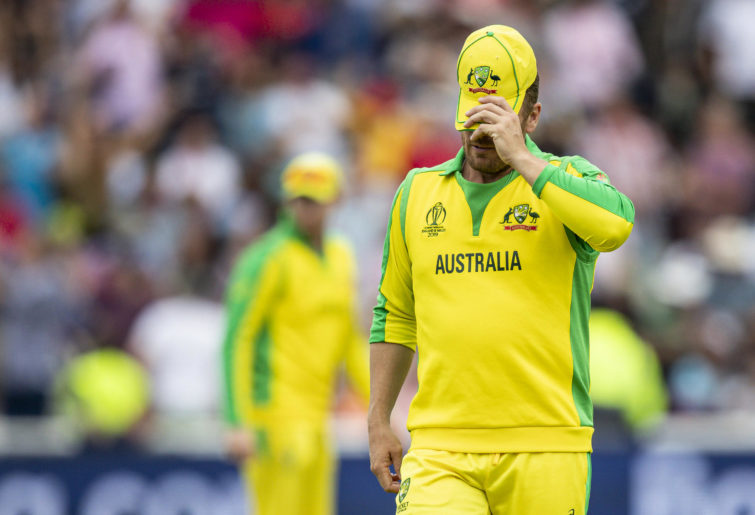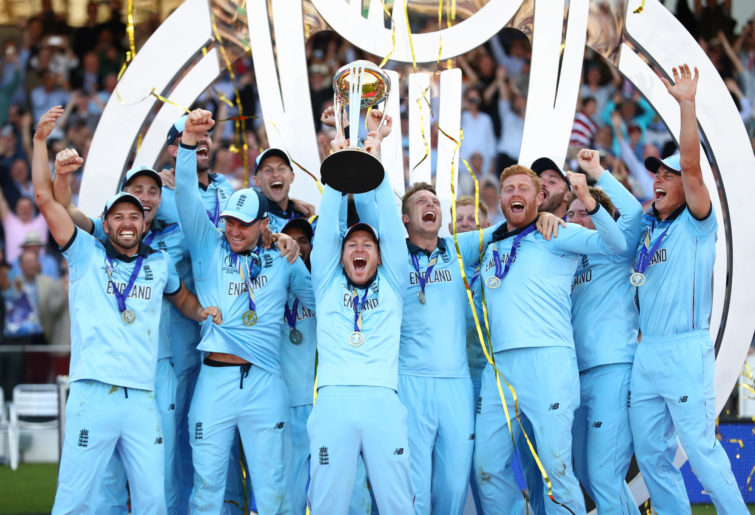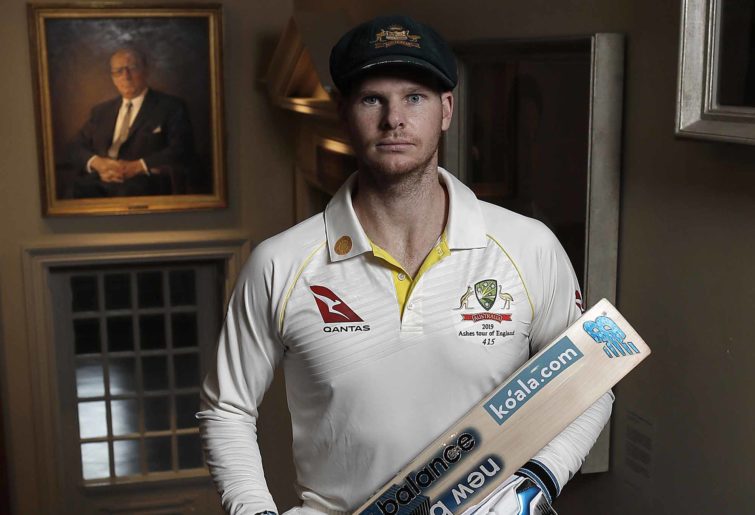World Cup chances up in the air but Smith makes Major call on T20 future, Green dumped despite huge IPL deal
Test great Steve Smith is to play for Washington Freedom in the second season of Major League Cricket as the Australian influence in the…
It began ominously for the Aussies, who were without suspended duo Steve Smith and David Warner and humbled by an Indian side at the height of their powers.
The visiting Indians knew that there would be no better opportunity to create history, becoming the first Asian side to claim a Test series on Australian soil.
The series arrived in Sydney for the new year Test in January 2019 with the tourists having reclaimed the Border-Gavaskar Trophy. Pride was the prize for an Australian side hoping to draw the series at a venue that traditionally provided the most assistance to visiting Asian teams.
It was quintessential of the series up to that point. The soft-spoken, meticulous Cheteshwar Pujara batted and batted and batted until rain forced a historic series to an anticlimactic draw.
For the home side it was a series characterised by a hastily assembled makeshift batting line-up occupied by a motley of old and young hoping to make the most of a new opportunity. Unbeknown to us back then, it would be late arrival Marnus Labuschagne, whose name garnered more attention than his wielding of the willow, who would carry his form into the year ahead.

(Hamish Blair/Getty Images)
Meanwhile, in the picturesque foothills of the Himalayas, Test cricket’s new kids on the block squared off for the first time, with an exciting Afghanistan outfit securing their first Test win against Ireland. While not central to the achievement of their first Test win, the Afghans’ first two years in the purest form of the game has been underscored by the tentative state of political relations on the Subcontinent.
Much of the Afghan side owed their cricketing journey to neighbours Pakistan – it was in the desperation of crowded refugee camps the Afghanis found refuge in the game of cricket.
Yet these humble beginnings prevented close relations between the two cricketing nations due to the overbearing influence of regional superpower India. Showered in funding and given a ‘home’ venue by the Board of Control for Cricket in India, Afghan cricket authorities were forced to keep their Pakistani neighbours at a distance. Creating tension which erupted in the World Cup clash at Leeds in June was without a doubt a low point for what has been an unbelievable year of cricket.
As we rolled into March and the World Cup drew near the Aussies saw a remarkable turn of fortune, clawing their way back to secure a series win on Indian soil before whitewashing Pakistan in the UAE.
Queenslander Usman Khawaja, regarded by some as perennially unlucky at the selection table and derided by others for his easygoing style, joined with Pete Handscomb and Ashton Turner to catapult the Aussies into discussions of World Cup favouritism.
The performance against Pakistan was almost faultless, with the footage of a tender moment between Marcus Stoinis and Melbourne Stars teammate Adam Zampa in the Sharjah team dugout comically symbolising the growing cohesion among Justin Langer’s charges.
Allow me to abuse my poetic licence in the following paragraphs, because the best of 2019 was yet to come.
A tournament dominated by the usual suspects was thrown a curveball when the unfancied Sri Lankans stunned the hosts at Headingly.
Suddenly Pakistan, Bangladesh and Sri Lanka were given a sniff at progression to the semi-finals. But in typical English fashion it would be the rain which became Pakistan’s worst enemy, while the Lankans and Tigers just didn’t have enough to break into the top four.
The defining moment of the tournament came in the first semi-final. Under heavy Manchester cloud cover – surprise, surprise – and spurred on by a raucous crowd that had followed them around the country in impressive numbers, the Indian juggernaut fell to an inspirational, gritty performance from the Kiwis.
After grinding to a below-par 239 thanks largely to the efforts of captain Kane Williamson and the evergreen Ross Taylor, Kiwi hopes rested with their pace attack making early inroads into a deep Indian batting card – and that’s exactly what they did.
Silencing the pro-Indian stands for perhaps the first time all tournament, the Kiwi quicks had the more fancied Indians reeling at 4-24. Virat Kohli and Rohit Sharma scored just two runs between them. A middle-order fightback from MS Dhoni and Ravi Jadeja wasn’t enough as the brave Kiwis held their nerve, while the Manchester weather did its best to interrupt proceedings, stretching the enthralling encounter into a two-day contest.
The other semi-final was a brutal affair.
A dead-eye Jos Buttler throw to the bowlers end to remove Steve Smith summed up a dismal day at the office for the defending champions. Caught just short of the crease after Mitch Starc called for a quick single, the runout ended Smith’s lone hand of 85, and the English top order made light work of an underwhelming target of 224.

(Andy Kearns/Getty Images)
All eyes then turned to the home of cricket, where in front of the famous pavilion occupied by row upon row of bacon-and-egg ties, we saw the greatest game this sport has ever seen.
It was a truly magnificent spectacle, transcended by moments of individual brilliance which all combined to form a tapestry of a game which will forever live in the memories of all those lucky enough to see it.
The stories are as endless as they are enthralling.
The juxtaposition of old meeting new as Lord’s hosted the first implementation of the countback rule.
Two nations which had never tasted the ultimate glory: England, the games oldest institution, and New Zealand who fell spectacularly at the final hurdle in 2015.
We all know what happened next.
Little moments became monumental shifts of momentum. Jimmy Neesham’s slog over cow corner, Jason Roy’s fumble in the deep, Jos Buttler lunging at the wicket, gloved hand outstretched, to put the final touch on an epic extravaganza.

(Michael Steele/Getty Images)
And then we had the Ashes.
Just in case the greatest match in the history of the game wasn’t enough to satisfy your palette, the games oldest rivalry renewed hostilities a month later.
Embers from the World Cup gently blew over into this time-honoured battle, yet in the broader scheme of things this was an entirely different ball game. England may have just won the World Cup, but when Cameron Bancroft faced up to Jimmy Anderson for the first ball at Edgbaston it became nothing more than a memory.
For us Australians, nothing comes close to the drama and tension of the Ashes. As notable as limited-overs tournaments have become in the modern game, the yearning to stick it to the old enemy remains the ultimate glory.
One of those embers still flickering from the World Cup took the shape of Ben Stokes.
After claiming man-of-the-match honours for a century in the draw at Lord’s, the tattooed New Zealand-born all-rounder almost single-handedly dragged England back into the series at Leeds.
Finding an ally in the bespectacled Jack Leach, the duo were the last men standing as the hosts chased down an incredible – I’m running out of adjectives here – 358 to prevent the Aussies from retaining the Ashes, albeit momentarily.
Yet for all of his heroics and Archer’s mesmerising spells of consistent 150-kilometre-per-hour deliveries at Australian heads and the emergence of a pocket rocket No. 3 in Marnus Labuschagne, the 2019 Ashes series belonged to one man and one man only.
Steven Peter Devereux Smith.

(Ryan Pierse/Getty Images)
Armed with a piece of willow adorned in New Balance signage and a mind that spends entire nights awake, Australia’s poster boy fidgeted his way to an astonishing 774 runs in just seven innings.
Met by a chorus of boos and jibes by the Barmy Army on the first day at Edgbaston, the boy from Kogarah responded in the purest form possible: with the bat.
He amassed century upon century, fighting his way through the barrage of Archer’s bouncers and Stuart Broad’s outswingers to slowly but surely receive the appreciation of a fiercely partisan yet knowledgeable and appreciative English audience.
Miraculously, despite being struck on the head in the second Test and missing the subsequent match as a result, he returned at Old Trafford with a solid 211. As you do.
Not only had this giant of world cricket found his way back to his past powers, but he had also gained even more. And if that doesn’t produce nightmares for bowlers around the globe, then quite frankly nothing will.
And on that note of redemption, perhaps this would be an appropriate time to conclude what is essentially a brief recap of one of the greatest calendar years in modern cricket history. No article, image or video could truly do justice to the raw emotion the year has produced for players, fans and everyone involved in this great game.
While Steve Smith captured the respect of the cricketing world, captain Kane from Tauranga captured our hearts.
And, fittingly, the 2019 edition of the Boxing Day Test, the most significant Test match of the calendar year, begins on Thursday with both Smith and Williamson waiting to write another chapter into this magnificent tale.